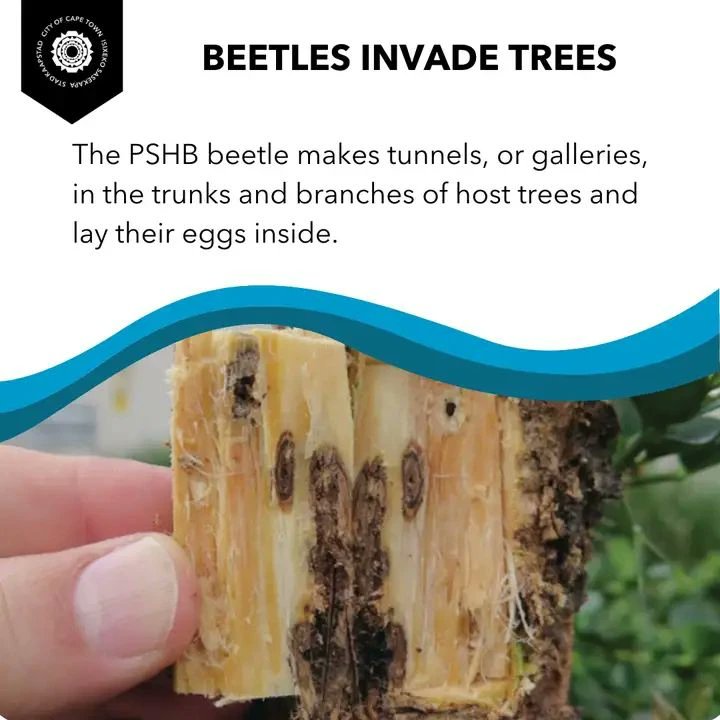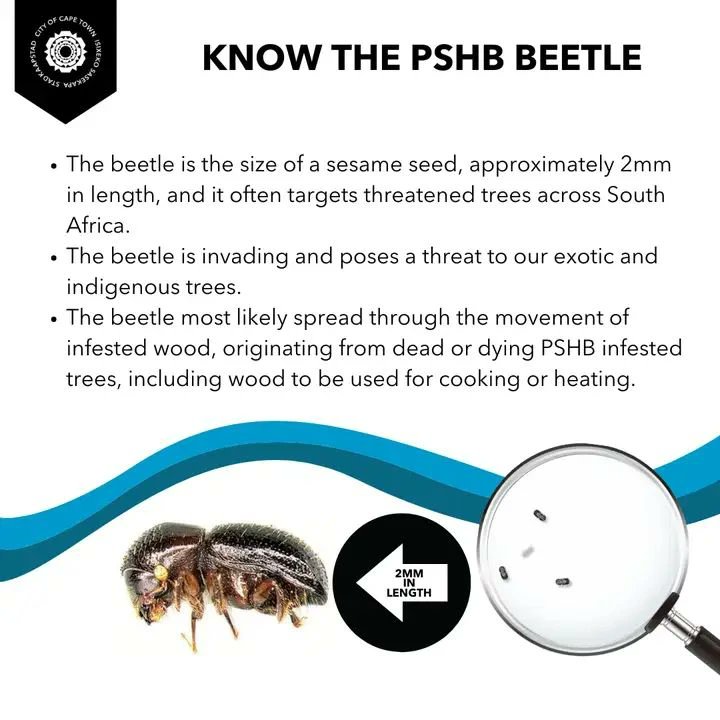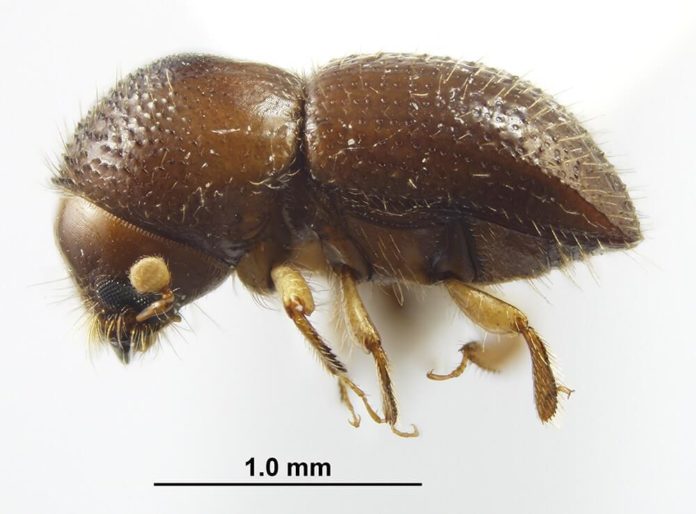The City of Cape Town has sounded the alarm after a tree-killing invasive beetle was discovered in Newlands, which could pose a threat to the lush tree canopy in the area.
The notorious Polyphagous Shot Hole Borer beetle (PSHB) was first discovered in Somerset West in March 2019, but has now made its way to a private property in Kildare road in Newlands, infecting a Boxelder tree.
Surrounding property owners are advised to inspect trees on their properties as a matter of urgency.
The City’s Mayoral Committee member for the Environment Eddie Andrews says they need everyone’s help to get rid of this very damaging pest.
To date, only trees in the Somerset West area have been affected and removed.
‘We are extremely concerned about this latest sighting in Newlands as to date we have managed to contain the invasive Asian borer beetle to the Somerset West area with the assistance and cooperation of residents.
‘Officials from the City’s Invasive Species Unit are currently on site to assess the situation to determine the extent of the infestation and the number of affected trees. The City is assisting the owner with the handling of the biomass. The wood from the tree must be chipped on site, and carefully removed under cover of heavy duty plastic and incinerated at an appropriate site,’ said Andrews.
The City will only know how many trees have been infested once the assessment has been concluded. For now, at least one Boxelder is impacted.
‘I encourage residents in the Newlands area to please inspect the trees on their properties for possible beetle infestations, in particular Boxelders. Sightings must be reported to the City as soon as possible so that we can prevent the spreading. More information is available on the City’s website, as well as a form to report sightings. By working together we can contain this beetle,’ said Andrews.
How to report PSHB beetle sightings
Information about the borer beetle is available on the City’s website; included are photos of infected trees and what symptoms to look out for.
Use the following link: https://www.capetown.gov.za/City-Connect/Activities-and-programmes/Nature-and-environment/invasive-species-programme, click on ‘Invasive Tree Bug Awareness Notice’ for more information.
There is also a link to report a sighting to the City. Just give your details and the location of the infected tree and officials from the City’s Invasive Species Unit will conduct an investigation.
More about the PSHB beetle
• The beetle is the size of a sesame seed, approximately 2 mm in length, and its symbiont fungal partner are threatened trees across South Africa
• It is an ambrosia beetle native to Southeast Asia
• It was first discovered in South Africa in 2017 on London plane trees in KwaZulu-Natal’s National Botanical Gardens in Pietermaritzburg
• The beetle is invading and poses a threat to exotic and indigenous trees across South Africa
• The beetle’s most likely pathway or vector is through the movement of infested wood, originating from dead or dying PSHB infested trees, including wood intended to be used for cooking or heating.

READ MORE: This is how invasive carp betters food security
Lifecycle of the PSHB beetle
• The female beetle carries with her three species of fungi, including the pathogen, Fusarium euwallaceae
• The adult females burrow into trees to establish brood galleries where they lay their eggs. They introduce the fungus which colonises gallery walls, becoming a food source for developing larvae and adult beetles. The fungus kills the water conducting tissues of the tree and can lead to branch dieback and eventually causes the tree to die
The following trees are invaded
• Alien trees infested to date include London plane trees, Liquidamber, Japanese maples, Chinese maples, pin oaks, and English oaks
• Indigenous trees invaded to date include the Coast Coral tree, Forest Bushwillow, and the Cape willow
What to do:
• Burning of the infected wood is the preferred method
• Chipping of the wood into small pieces for compost is also recommended as the heat build-up in the composting process will kill the beetle
• Once the tree has been felled the debris should be cleared as soon as possible and if required, the area should be sanitised
• Infested plant material can be placed in refuse bags and sealed. The bags must be put in direct sunlight for solarisation as the heat from the sun helps to kill the beetle and its larvae.



